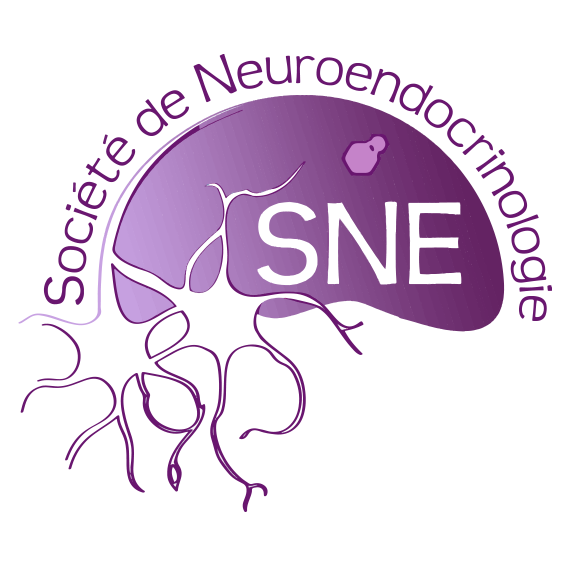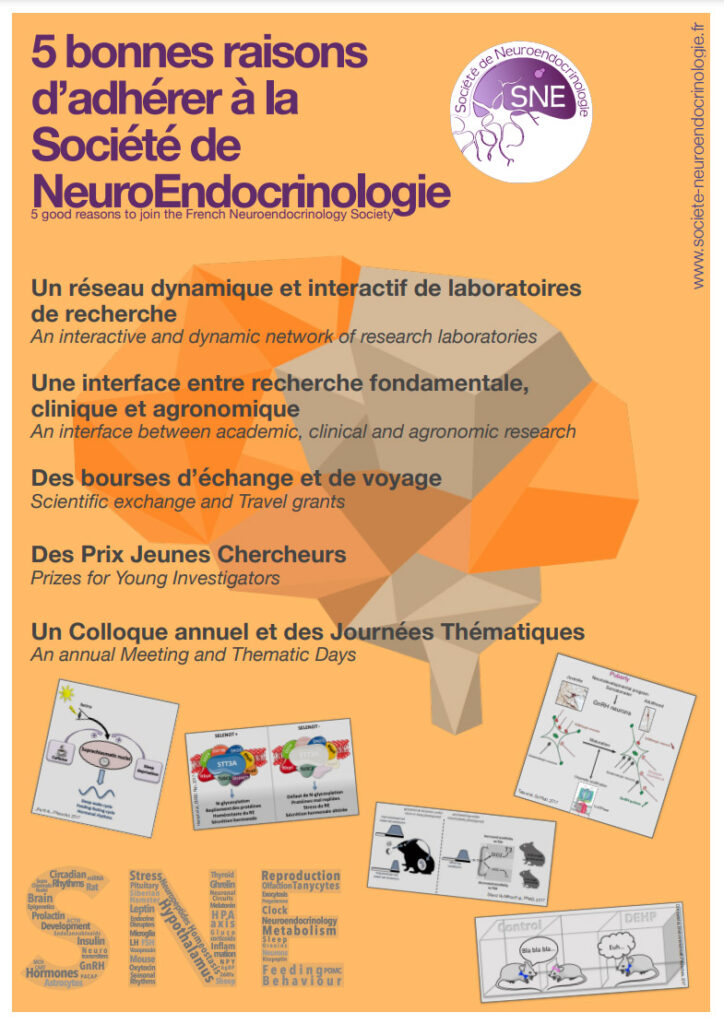Rôles des peptides dérivés de la préproghréline dans le contrôle de la sécrétion de GH et du comportement alimentaire
Ghréline et obestatine sont deux hormones isolées à partir du tractus gastro-intestinal et issues du clivage protéolytique du même précurseur : la préproghréline. La ghréline est un peptide de 28 acides aminés qui subit une acylation sur sa sérine en position 3 lui permettant de se lier au récepteur des GH sécrétagogues (GHS-R). En plus de son rôle stimulateur sur la sécrétion de GH, la ghréline acylée est le seul peptide orexigène du tractus gastro-intestinal et un puissant facteur adipogène. L’obestatine est un peptide de 23 acides aminés isolé également à partir du tractus gastro-intestinal et initialement décrite comme ayant un rôle anorexigène mais les données physiologiques concernant le rôle de ce peptide sont rapidement apparues contradictoires. Des données issues du laboratoire ont montré que l’obestatine antagonisait la sécrétion de GH et la prise alimentaire induite par une injection de ghréline exogène mais n’a pas d’effet propre chez le rongeur. De plus, cette interaction n’avait pas lieu au niveau hypophysaire. Nous avons donc émis l’hypothèse qu’une interaction au niveau central entre la ghréline et l’obestatine est nécessaire au maintien de l’homéostasie des systèmes neuroendocrines contrôlant la croissance, la composition corporelle et la balance énergétique chez l’adulte.
Afin de déterminer le lieu de l’interaction entre ces deux peptides, nous avons mesuré l’activation cFos dans les neurones à NPY et GHRH du noyau arqué de l’hypothalamus (ArcN) qui expriment le GHS-R et sont la cible de la ghréline. Nos résultats montrent que l’obestatine et un variant naturel, l’obestatine Q90L, retrouvé parmi les patientes anorexiques à indice de masse corporelle (IMC) bas, ont un effet antagoniste sur la sécrétion de GH, la prise alimentaire et l’activité neuronale induites par la ghréline au niveau des neurones à NPY et GHRH de l’ArcN chez la souris. Une grande variabilité interindividuelle en réponse à la ghréline est observée et les effets antagonistes de l’obestatine ne sont visibles que chez les souris qui répondent bien à la ghréline, ce qui pourrait expliquer pourquoi les effets de l’obestatine ont été difficiles à caractériser jusqu’à présent.
Dans plusieurs pathologies associées à des déséquilibres de la balance énergétique et de l’axe GH/IGF-1, les ratios ghréline/obestatine sont modifiés. Afin de déterminer l’impact physiologique de ces ratios déséquilibrés dans le contrôle de la sécrétion de GH et la prise alimentaire, nous avons tiré parti de souris déficientes pour le gène de la préproghréline (ghrl-/-) qui n’expriment ni ghréline ni obestatine et chez lesquelles les deux peptides peuvent être remplacés pour en étudier l’impact. Bien que la taille, le poids et le comportement alimentaire ne sont pas altérés chez les souris ghrl-/-, nous observons que l’amplitude des pics sécrétoires de GH des souris ghrl-/- jeunes adultes (7 semaines) est réduite comparée à celle des souris sauvages du même âge, soulignant un rôle de la ghréline endogène en période de croissance. De plus, le remplacement de ghréline et d’obestatine en quantité équimolaire chez les souris ghrl-/- nous a permis de vérifier que ces souris sont toujours capables de répondre à la ghréline en augmentant leur prise alimentaire mais répondent différemment à la co-administration de ghréline et obestatine.
Enfin, l’administration d’un agoniste du GHS-R provoque une augmentation de la prise alimentaire confirmant que ces souris ont une signalisation du GHS-R intacte. Ce modèle semble donc idéal pour la mise en place de protocoles pour l’étude 1) de la signalisation ghréline-GHS-R et 2) l’impact de différents ratio de ghréline/obestatine sur la sécrétion de GH et le comportement alimentaire.
Ainsi, les travaux réalisés au cours de cette thèse montrent l’importance des peptides dérivés de la préproghréline au cours du développement et à l’âge adulte pour le contrôle de la sécrétion épisodique ultradienne de la GH et le maintien de l’homéostasie énergétique.
Mot clés : Préproghréline –GH – prise alimentaire – neuroendocrinologie
——————————
Role of preproghrelin-derived peptides in the control of GH secretion and feeding behavior
Ghrelin and obestatin are two hormones isolated from the gastro-intestinal tract and originate from the cleavage of the same precursor: preproghrelin. Ghrelin, a 28 amino-acid peptide acylated in its serine in position 3, is the endogenous ligand of the Growth Hormone Secretagogue receptor (GHS-R). In addition to its stimulatory effect on GH secretion, a hormone that is also involved in the regulation of energy metabolism, ghrelin is the only orexigenic and adipogenic peptide originating from the gastro-intestinal tract. Obestatin, a 23 amino-acid peptide also isolated from the gastro-intestinal tract, was initially characterized as an anorexigenic agent. However, observations concerning the physiological effects of this peptide quickly became controversial. In addition, data from the laboratory showed that obestatin inhibits ghrelin-induced GH secretion and food take in rodents but that the peptide does not have any effects when administered alone. It was also reported that obestatin blocks ghrelin-induced inhibition of -aminobutyric acid (GABA) synaptic transmission onto GHRH neuron but does not interact with ghrelin at the pituitary level. Thus, we hypothesized that a ghrelin-obestatin interaction at the central nervous system (CNS) level is necessary to maintain the homeostasis of neuroendocrine systems regulating growth, body composition and energy balance in adults.
In order to determine the site of interaction between ghrelin and obestatin within the CNS, we measured cFos activation in NPY and GHRH neurons within the hypothalamic arcuate nucleus (ArcN), which express the GHS-R and are direct targets of ghrelin’s actions. We showed that obestatin and obestatin Q90L, a natural variant of obestatin, expressed with a higher frequency in anorexic patients who have the lowest body mass index, have an antagonistic action on ghrelin-induced GH secretion, food intake and neuronal activity in ArcN NPY and GHRH neurons. Interestingly, inter-individual variability in response to exogenous ghrelin administration was observed and the antagonistic effects of obestatin were only visible in mice that were responding well to ghrelin. This last observation may explain why obestatin actions have been difficult to characterize so far.
In several pathologies associated with dysregulated energy homeostasis and/or GH/IGF-1 axis, alterations in the ghrelin/obestatin ratios have been observed but little is known about the physiological impact of such modified ratios. In order to determine the role of unbalanced ghrelin/obestatin ratios in the control of GH secretion and food intake, we used preproghrelin deficient mice (ghrl-/-) that express neither ghrelin nor obestatin and can be replaced with various peptide ratios to study their impact. Although body growth and feeding behavior were not altered in ghrl-/- mice, which is consistent with previous reports, we observed that the amplitude of GH secretory peaks was reduced in young (7 weeks old) but not older (36 weeks old) ghrl-/- mice compared to wild-type littermates, supporting a role of ghrelin during the growth period.
Finally, ghrl-/- mice were still responsive to the orexigenic actions of ghrelin and of a GHS-R agonist, BIM-28131, confirming that those mice have an intact GHS-R signaling and could be a good model to study 1) ghrelin signaling and 2) the impact of different ghrelin/obestatin ratio on GH secretion and feeding. However, when replaced with equimolar quantities of ghrelin and obestatin, they respond differently from wild-type littermates to the co-administration of ghrelin and obestatin, which also suggests that compensatory mechanisms consecutive to the absence of ghrelin may take place in ghrl-/- mice.
Thus, the work realized during my PhD show the key role of preproghrelin derived peptides during development and in the adulthood to control ultradian GH secretion as well as to maintain energetic homeostasis.
Keywords : Preproghrelin – GH – food intake – neuroendocrinology
Présentée le 27 Novembre 2012
Laboratoire où a été soutenu la thèse: Equipe Neuroendocrinologie de la Croissance et de la sénescence, UMR894 INSERM
Nom des directeurs de thèse: Virginie Tolle, Jacques Epelbaum

